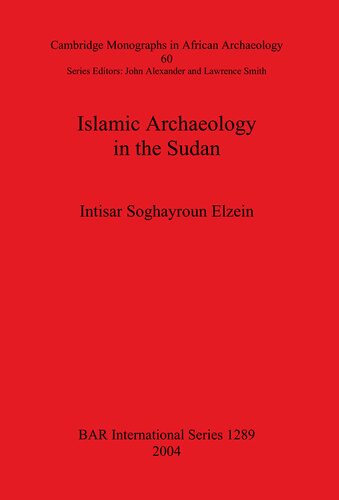

Most ebook files are in PDF format, so you can easily read them using various software such as Foxit Reader or directly on the Google Chrome browser.
Some ebook files are released by publishers in other formats such as .awz, .mobi, .epub, .fb2, etc. You may need to install specific software to read these formats on mobile/PC, such as Calibre.
Please read the tutorial at this link: https://ebookbell.com/faq
We offer FREE conversion to the popular formats you request; however, this may take some time. Therefore, right after payment, please email us, and we will try to provide the service as quickly as possible.
For some exceptional file formats or broken links (if any), please refrain from opening any disputes. Instead, email us first, and we will try to assist within a maximum of 6 hours.
EbookBell Team

0.0
0 reviewsThe Middle Nile Basin, which is in effect the present Republic of the Sudan, from the 7th century CE accepted Islam through influences from both the north and the east and responded to the changes which have taken place in the Dar al-Islam. From the north these influences, through Egypt, have been largely from 'Sunni' sources and from the east, through the Red Sea Coast which have been 'Sufi'. This has profoundly affected the spiritual life of both the immigrant Muslims and the indigenous population who converted to Islam. Political divisions through the centuries maintained those differences and as a result they are visible in the archaeological evidence on which this work concentrates. The principal aims of this study are: to define and analyse the archaeological evidence for Islam in the Sudan; to establish a basis for future Sudanese study in the field of the archaeology of Islam, by considering the present evidence in all aspects; to point out the variations in archaeological evidence in the domains of Ottomans, Fung and Fur; to analyse the main influences that came from the east, north, north-west and west Africa and their impact on material culture in the Middle Nile Valley; to draw attention to the long misunderstood Ottoman presence in Lower Nubia, the importance of the Mahas mekdom in its relation with the Ottoman and Fung sultanates; to draw attention to the evidence of the Islam of the nomads and their material culture and also to contribute to a better understanding of the true nature of the foundation of Islam in the Sudan from archaeological remains and written documents and comment on the importance of documentary evidence in the understanding of Islamisation of the Sudan.